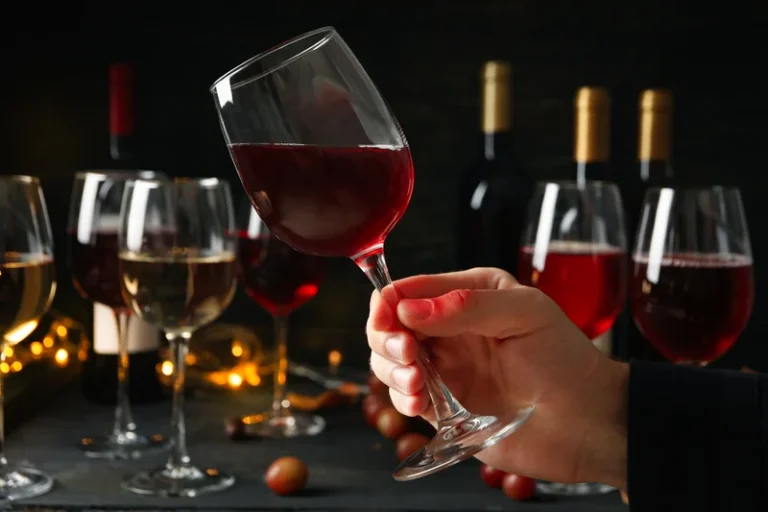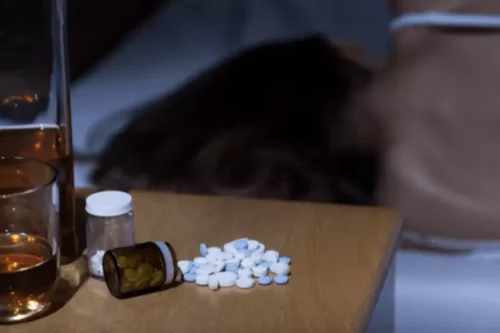
Dr. Jamison is one of the foremost authorities on manic-depressive (bipolar) illness; she has also experienced it firsthand. Ironically, Charlamagne’s fear of failure—of falling into the life of stagnation or crime that caught up so many of his friends and family in his hometown of Moncks Corner—has been the fuel that has propelled him to success. However, even after achieving national prominence as a radio personality, Charlamagne still found himself paralyzed by anxiety and distrust.

WELCOME TO MINDING THERAPY
Carly Tagen-Dye is the Books editorial assistant at PEOPLE, where she writes for both print and digital platforms. “I still have that messaging in my brain best alcoholic memoirs at times, that I’m not enough or that I should look better,” she wrote. “Kerry in college was a hot mess… and bit of a wild child,” she added.
Economic Effects of Alcohol and Drugs

Clegg’s manic spiral is related in a relentless present tense, in a prose that’s sparse and detached—and lit up by little flares of lyricism to conjure each hit. Horrified and enthralled, we see the world through Clegg’s increasingly despairing gaze—and a part of us longs as much as he does for another fix to provide some relief from the horror. Portrait is often collected with its sequel, Ninety Days, which portrays the period after Clegg’s release release from the rehab that saved him (and ends by explaining how life complicated the book’s redemptive ending – as with De Quincey and Ditlevsen). Although both are worth reading, it’s the first I find myself returning to, marvelling at its ability to conjure the insanity of addiction from inside its diabolical reality.
“We Are the Luckiest: The Surprising Magic of a Sober Life”
Most of the artists featured in “The Long Run” have also been sustained by relatively stable teaching jobs in universities — possibly the era’s greatest arts patrons. Today, though, neither of those routes is particularly viable; universities are increasingly staffed by adjuncts on poverty-line pay, and media outlets (along with every other creative industry) are in near-constant crisis. Sarah Hepola, author of Blackout, one of the addiction memoirs that has its own post on this blog, similarly views Knapp’s contribution as seminal. In Quit Like a Woman, author Holly Whitaker examines the drinking culture, specifically surrounding alcohol and women, and gives women a step-by-step guide to quitting—or at least, changing their relationship with alcohol.

- Admitting you have a problem — not to mention actually getting sober — is no small feat.
- They quickly became friends, bonding over their shared desire for an exciting, outside-the-lines life.
- But despite that success, Stahl’s heroin habit began to consume him, derailing his career and destroying his health until one final, intense crisis inspired him to get clean.
- A Xanax dependence led to cocaine, ecstasy, and a tumbling rabbit hole of prescription drug abuse as she manipulated doctors, lied to loved ones, and struggled to maintain her high-profile job at Condé Nast amidst the highs and lows of addiction.
- Born to Persian parents at the height of the Islamic Revolution and raised amid a vibrant, loving, and gossipy Iranian diaspora in the American heartland, Melody Moezzi was bound for a bipolar life.
If you’re among those who find listening to stories about addiction and recovery helpful and reassuring, here are some heartfelt, well-researched, and highly recommended options. Although she makes faltering progress in building a simulacrum of grown-up life, her relationship with alcohol—“I had an appetite for drink, a taste for it, a talent”—steadily overtakes everything. By the end of her drinking she is reduced to crouching on a stairwell outside her apartment, glugging whisky with her one-year-old son and failing marriage inside. But even more than how it captures the bleakness of alcoholism, what I most value in this book is how she narrates her recovery with such brutal honesty. This is no joyful, linear skip towards sobriety and redemption. She keeps showing up to 12-step meetings, even when they do nothing for her.
- The result is an exploratory, impressionistic book that roves across memoir, portraiture and cultural meditation.
- When I first read this book over ten years ago it felt like I was reading my own journal (if my journal was written in incredibly eloquent prose).
“Quit Like a Woman: The Radical Choice to Not Drink in a Culture Obsessed with Alcohol”
1995’s The Liars’ Club, which describes her extraordinary and troubled family—her mother would sometimes joke about the time she left bullet holes in the kitchen wall by trying to shoot her daughters—is a stone-cold classic of autobiographical writing. Karr arrived with a unique literary voice that combined rich Texan and burst of lyricism. And she had an almost miraculous ability to portray https://ecosoberhouse.com/article/dealing-with-internal-and-external-relapse-triggers/ her broken family with wit and love, without ever flinching from pain. 2000’s Cherry picked up the story by showing Karr as an adolescent, already dabbling with drugs and profoundly lacking any sense of belonging. Ditlevsen’s failure of nerve, causing her to wrap up three volumes of the most trenchant and unillusioned autobiography ever written with a feeble daydream, is easily explained.

“God and Starbucks: An NBA Superstar’s Journey Through Addiction and Recovery”
- One hint that the author and protagonist of A Fan’s Notes (1968) are really the same person is that they are both called Frederick Exley.
- To vote on existing books from the list, beside each book there is a link vote for this book clicking it will add that book to your votes.
- Back home in California, McClelland cannot stop reliving vivid scenes of violence.
In conversations with my peers — artists of all kinds, dispersed across cities and countries, mostly in their mid-30s, not at the beginning of the road but nowhere near on cruise control — the question of how we keep doing this is constant, acute, existential. Not because we can’t find inspiration, mysterious energy or even divine force. Maybe we’re impatient, selfish, overly focused on measures of success. We want people to read our writing, listen to our music, stage our plays, make our films. We want communion with an audience alongside the private thrill of creating. We want to follow our strange, illogical urges to make things, rather than retrain as therapists or coders or property developers.
- Although both are worth reading, it’s the first I find myself returning to, marvelling at its ability to conjure the insanity of addiction from inside its diabolical reality.
- Having been in recovery for many years, and working here at Shatterproof, I often get asked to recommend books about addiction.
- These works of narrative medicine allow others with similar challenges to say, “That’s exactly how I feel,” a powerful connection through representation when these conditions can be so isolating.
- She also researches the clinical aspects of bipolar disorder, including the strengths and limitations of various treatments and medications, and what studies tell us about the conundrum of attempting to “cure” an otherwise brilliant mind.
- Ria Health is a smartphone-based program that assists people in reaching their unique alcohol-related goals, whether that means cutting back or quitting for good.

No comment